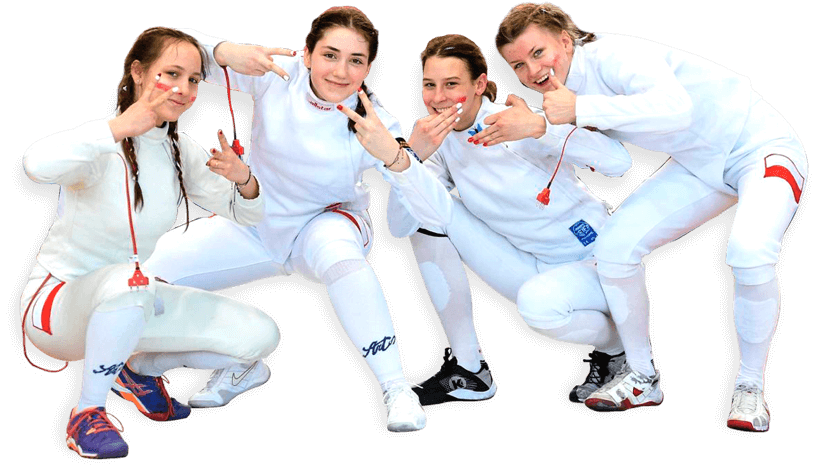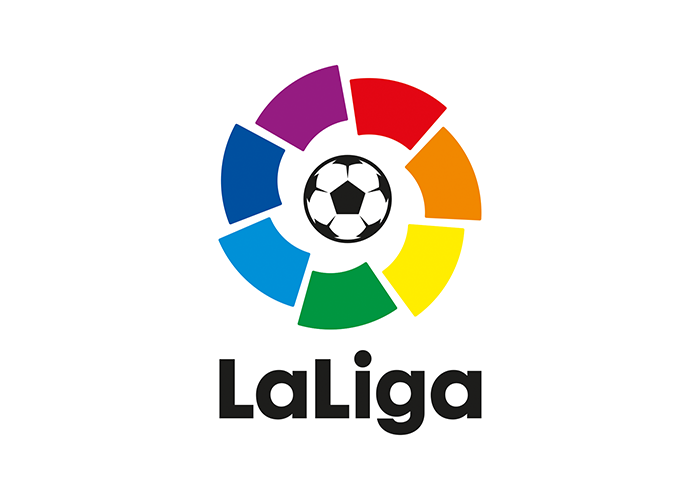Toprock, footwork and freeze. Poles with high chances in breaking

Breaking is a discipline that will make its Olympic debut in Paris. However, it will be possible to admire it earlier, during the III European Games Kraków-Małopolska. Igor “Wigor” Wypiór, the current bronze medalist of the European Championships, and coach of the Polish breaking team, Adam Stefański, talk about everything there is to know about this sport.
Most people know this discipline under the name of breakdance, although professionally it is called breaking. Where the difference came from?
Adam: Breakdance is primarily a media name. When breaking became popular, and in Europe it was in the 1980s, the memorable Rock Steady Crew tour, then it was publicized by the media, and nobody paid attention to the terminology. Those who knew what it was about, called it breaking or b-boying. Breakdancing was a name that functioned more in the layperson, and it was immediately known that it was about “spinning on the head,” a break-dance. However, when the discipline was included in the Olympic programme, the nomenclature had to be clarified.
Breaking emerged in the US in the 1970s, and when did it reach Poland?
Adam: There are different messages, because a lot depended on the flow of information. We lived in such a political system, that many things did not reach us. Generally, it was also the 1980s, although there are claims that some people saw it in the U.S. as early as the 1970s and tried it when they returned home. Fashion was coming from the West, and as we know, if something came to us from there, people were more interested in it. Not everyone fully understood that it was breaking, and they created their own things, mixed dance styles. Only in the last ten years has it started to crystallize. The beginnings, by the way, were in very different places, from small towns to the biggest centers where breaking appeared much later. I don’t know where it came from, but even Warsaw, the capital, was one of the last places where this dance appeared. It was brought, moreover, by people from smaller centers.
And what did your beginnings look like Igor?
Igor: It was thirteen years ago, in 2009. I started at a dance school in Nowa Huta, where classes were taught by b-boy Decu, and it was with him that I took my first steps. My love for it started when I saw dancers doing a breaking show in the Krakow market and I really liked it. I was terribly eager to try it, I went to the first classes, but there the trainer taught really basic moves, and I, as a little kid, only wanted to spin on my head and stand on my hands. Then, after the first class I let it go, but after a couple of years I came back and since then I’m in it for good.
And when did you start serious trainings?
Igor: I started taking breaking seriously six years ago. And since then, I focused on training to the maximum, I didn’t let go, I didn’t take any breaks. And I think that’s when I started to take a sporty approach to it, too.
When did breaking turn into a sport?
Adam: It hasn’t transformed, and in my opinion it never will! At first there was no rating system that could be written down on paper. The judges would point their hand toward the competitor they considered the winner, and at some events, they were simply chosen by the gathered crowd. However, all this began to evolve, and the judging system changed as well. As in other disciplines, moreover, the development of technology has resulted in improved training, better knowledge of one’s body. Still, the artistry remains. As a sport, it functions more on paper, because without it, as street people, we would not have entered the salons. There had to be a judging system understandable to the casual observer, who, sitting in front of the TV, sees nine judges pressing the blue or red button, indicating the winner. Everything that had been judged up to that point was written down, although it was not codified. And that was the first step. Then sports associations were formed, and well, there was lobbying for breaking to appear on the Olympic programme. However, when we look at the battles, no element has been taken away, there is still an art in it.
What does this judging system look like in practice?
Adam: There are two versions of the judging system, the simplified one is called ThreeFold, which has three categories, and the expanded version Trivium, which has six. The former is used at local events, less often at national events. At European or world championships, at global events, Trivium is used. We compare two players, standing on the red and blue fields. The player from the red field starts. Of course, the one from the blue field has the right to come out first, but if he doesn’t want to, it’s mandatory for the one from the red field to do so. We judge technique, creativity, musicality, presentation on stage and variety of movements. In addition, there are small points that we can add to a contestant, for example, for spontaneity, reaction to music, or freestyle, and at the end we get a score included in percentages. The system is set up so that there are no ties. If there are two dancers at the same level, we have to score at least one element higher. It’s a bit like in ski jumping, where with the same distance, in the same weather conditions, style scores are decisive. If the battles are evenly matched, you have to look at any other details.
What is the form of such battles?
Adam: The duels are in a one-on-one format. But first, there is a qualifying round, depending on the organisers. With a large number of participants, we have two mini stages, with five judges on each, and then the presentations take place. Dancers stand in the four corners of the stage, and perform one at a time, and the judges award them with points from 0 to 100, and there are also red, white and green categories. The former means no qualification. An even number of participants is always selected, for example, 128, and those with the highest ranking face those with the lowest of the qualified. This is how the first round takes place. From each duel the winner moves on until we reach the best “16”. Then begins the so-called round robin, in which we divide the participants into four groups, and in them the fight takes place each against each. The rounds are decided, two for each duel, and in the event of a tie, the number of judges’ votes total for the entire duel. And two people from each group move on to the best eight, where we again return to the knockout system, in which the loser is out.

A given performance consists of elements such as toprock, footwork and freeze. What actually are those elements?
Adam: Toprock is all the elements performed standing, footwork is everything we do in a squatting position, going down on our elbows, forearms or wrists. Later we also have power moves, or all the spinning figures, and at the end there is usually freeze, or freezing. We also have combinations of different things, such as go down – descending between toprock and footwork or power moves, or the so-called burn, which is some way of ridiculing the opponent with gestures. On top of that, you can’t forget about the go down as well, because if you go in with class, you should also go down with class. And then the whole solo is closed. The better the player is prepared, the combinations are more elaborate. There are no mandatory elements, there is complete freedom. However, if we want the judges to rate us higher, we must show that we can do something from each category.
And when a competitor enters a battle, does he have a pre-prepared layout, or is it a form of improvisation?
Adam: There is a big discussion on this topic. Some people approach it in a way that they just do a freestyle, and wait to see what happens. However, as a judge in both systems, I think there are two steps to be taken. The first is training. In the preliminaries, to get to the round robin, you have to do everything, even elements you don’t like. And then, once there are three battles, we can have fun and open up more. Many dancers with a typically freestyle approach don’t make it through the preliminaries, because they succumb to dancers who are more athletically prepared. That’s why, in my opinion, you have to present trained elements at the beginning to get into the game.
Igor: In my case, there’s always a lot of freestyle. I feel much more confident in it. I also have my favorite moves, of course, and before duels I plan that I want to do them in a given fight. There are also tactics for a given opponent, and that is always somewhere in the back of my mind.
What does the breaking scene in Poland look like? Do we have a lot of male and female dancers?
Adam: At the moment, there has been a decline in the number of b-boys and b-girls, but this is noticeable all over the world. It was strongly influenced by the coronavirus pandemic, because a lot of training places were closed. Also, from my observations, there are more dancers poorer neighbourhoods, where breaking is the way to go out into the world. In our country, because of the widespread prosperity, dancing no longer has such value. We also live in a time, when people want results very quickly, and in breaking this is impossible. It takes years of training. In addition, if we come out of elementary school poorly prepared physically, gymnastically, then a twelve to thirteen-year-old has to make up a lot in the training room. Children come to me, who want to spin on their heads, but can’t do a forward flip… At the moment we have a lot of promising young players, whom we will try to promote. Unfortunately, several people who could represent us and fight for the Olympics have found that the rules that this system introduces, primarily anti-doping, are not for them. Because, no kidding, you can no longer afford to take some banned drugs here, and you have to move to a serious, sporting approach. This has deterred some of the scene, but fortunately we have dancers like “Wigor,” for example, whom we support and hope that they will be the ones to attract people to breaking. Igor, thanks to winning European Championship medals, has various scholarships and can devote himself to training and preparation, which is a problem for many, because when they finish school, and the reality of life catches up with them, they have to go to work, they no longer have time to train. Being in the sports system allows access for various types of funding for athletes, which is very important for people at a young age.
The European Games in Krakow are coming soon, where breaking will also appear. Is this considered something special for those in the field?
Igor: Of course it is! The pressure will be much greater, because it’s the event at home, but I am preparing hard, and hope to prove that I am able to get far on my own ground.
Adam: We already have one qualification for Igor, while all the time we lack media exposure. We’ve already been on TV a few times, but we want to intensify our efforts in that direction. In March, there is another chance to qualify for the European Games, and we are very keen to win another place.
After the bronze medal at the European Championships in Manchester, can Igor also win a medal at the European Games?
Adam: He certainly has a good chance! We are aiming for his top form just for the European Games. Igor is young, very hardworking, and now we have an event in Poland, and we want to perform as well as possible. The pressure comes from many directions. In Manchester, he beat the kind of competitors I would have never expected him to beat. Some athletes are afraid of him, because he’s young and very energetic, but he also fit well into the system and scores with most judges. On top of that, the fight will take place in Nowy Sacz, which is in his region, because he comes from Krakow, and that will surely motivate him even more. Another advantage is that we will know all the fighters beforehand, and there will be an opportunity to prepare a proper strategy.
Do you feel like a favorite?
Igor: To be honest, no. The competition in Manchester was a milestone for me, it’s the first event at this level where I got this far. I want to believe in my ability to win a medal. I will do my best to make it happen, but I don’t feel like a top contender.
The breaking competition will be held in Nowy Sacz. Do you expect a big mobilization of fans?
Adam: I think it’s all going to be so publicized, and there will be so many stars of breaking, that it would be hard not to come and see them! And at the same time, not to support our competitor. We will promote it heavily in our community. There will be an opportunity to meet the bests of the bests, and you don’t have to go to New York to experience it – just come to Nowy Sacz.

































